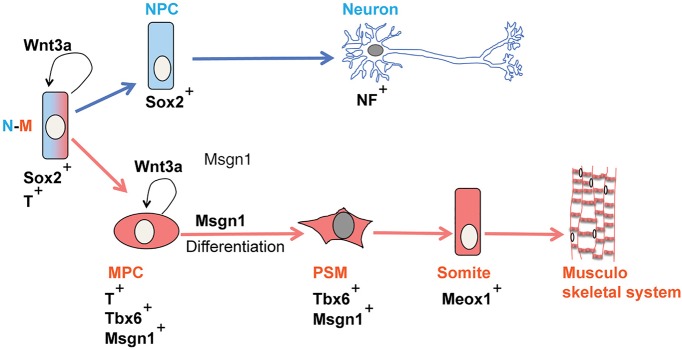Fig. 9.

Msgn1 is a master regulator of PSM differentiation. Bipotential NM stem cells, defined by Sox2 and T expression, generate the progenitors of the trunk spinal cord (NPC, neural progenitor cells) and musculoskeletal system (MPC, mesodermal progenitor cells). Wnt3a maintains both the NM stem cell and the MPC. In our model, the Wnt3a/β-catenin pathway activates the target genes T and Msgn1 in NM stem cells in the PS to specify paraxial mesoderm fate (Yamaguchi et al., 1999; Dunty et al., 2008; Chalamalasetty et al., 2011). Msgn1 initiates the genetic programs that define PSM identity and cell behavior by activating downstream master regulators of EMT and motility (Snai1) and neural suppression (Tbx6) among others. Msgn1 and Tbx6 expression must be extinguished for PSM cells to undergo MET and segmentation to form somites and, ultimately, to differentiate into skeletal muscle, bone, cartilage, tendons, endothelial cells and dermis.
